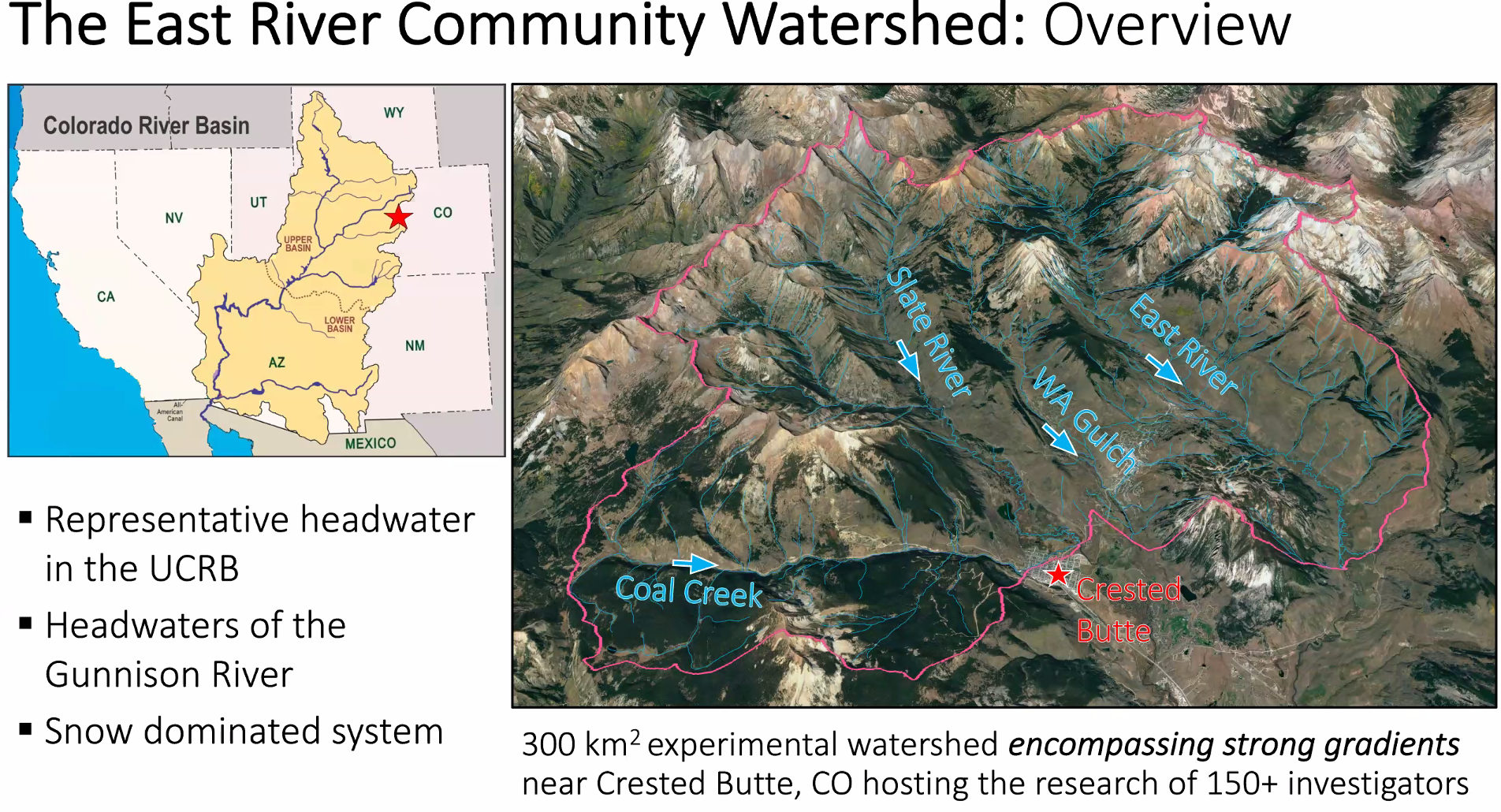AGU Scoop: SAIL Town Hall Emphasizes Collaborative, Interdisciplinary Science
Published: 9 December 2020

About 50 attendees of a December 8 virtual American Geophysical Union (AGU) town hall got the “who, what, when, where, why”—and the “how”—of ARM’s upcoming Surface Atmosphere Integrated Field Laboratory (SAIL) field campaign in Colorado.
Motivating the campaign, said SAIL Principal Investigator Dan Feldman, is that water is running dry in the Western United States. This is a particularly scary scenario to fathom when it comes to the Colorado River, which supplies water for about 40 million people. Researchers want to know if earth system models are equipped to accurately capture atmospheric and surface processes responsible for the dwindling water resources.
Starting in September 2021, the SAIL campaign will use an ARM Mobile Facility to collect atmospheric measurements in a well-studied watershed in the Colorado Rockies. Combining these measurements with existing surface and subsurface data will enable atmosphere-through-bedrock observations from the East River Watershed, near the town of Crested Butte in the Upper Colorado River Basin.
The campaign will wrap up in June 2023 after spending two falls, two winters, two springs, and one summer in the area. Feldman said this would allow SAIL to record interannual variability in atmospheric and surface processes.
“We’re very excited about the connections between the ARM facility and other research programs within BER.”
DOE ARM Program Manager Sally McFarlane
Feldman, from Lawrence Berkeley National Laboratory, introduced DOE ARM Program Manager Sally McFarlane to give a “programmatic perspective” on the campaign. McFarlane shared why the SAIL proposal was selected to move forward as an ARM Mobile Facility campaign, citing its interdisciplinary focus as a strength.
“We’re very excited about the connections between the ARM facility and other research programs within BER (DOE’s Biological and Environmental Research program),” said McFarlane. She also noted burgeoning collaborations with other agencies and institutions, such as the Rocky Mountain Biological Laboratory.
A Scientific Spectrum
Just as SAIL stretches broadly across many scientific areas, the campaign’s core science team represents 10 universities, four DOE national laboratories, and two national research centers. In addition to Feldman, six members of the core science team gave talks during the hourlong town hall.
L. Ruby Leung, an atmospheric scientist from Pacific Northwest National Laboratory and the chief scientist of DOE’s Energy Exascale Earth System Model (E3SM), pulled out potential SAIL observations that could help improve modeling in mountainous areas. For instance, she said, data on surface fluxes, clouds, winds, and boundary-layer evolution could help in evaluating the representation of land-atmosphere interactions over complex terrain.
Four researchers highlighted process studies related to specific topical areas:
- Dave Gochis, National Center for Atmospheric Research: land-atmosphere interactions
- V. Chandrasekar (Chandra), Colorado State University: precipitation processes
- Allison Aiken, Los Alamos National Laboratory: aerosol processes
- Jiwen Fan, Pacific Northwest National Laboratory: aerosol-cloud-precipitation interactions.

Ken Williams, from Lawrence Berkeley National Laboratory, closed out the presentations with an overview of the Watershed Function Scientific Focus Area (SFA). Supported by DOE’s Subsurface Biogeochemical Research program, the Berkeley Lab-led SFA will provide key observations for SAIL through its work in the East River Watershed. The 300-square-kilometer “community watershed” hosts research of more than 150 investigators—and soon, an ARM campaign.
The Future
Feldman wrapped up the town hall with a brief discussion of snow processes and topics for further community engagement, such as measurement-model intercomparison activities and machine learning opportunities for SAIL.
To discuss how your science and instrumentation might fit in with the SAIL campaign, contact Feldman.
If you missed the town hall, you can still watch the recording if you are attending the AGU Fall Meeting.
–Contributions from ARM science writer Katie Dorsey
Planning your AGU schedule? Get more information about ARM-focused AGU presentations.
Keep up with the Atmospheric Observer
Updates on ARM news, events, and opportunities delivered to your inbox
ARM User Profile
ARM welcomes users from all institutions and nations. A free ARM user account is needed to access ARM data.


















